I like this. I like having the exhibition sorted out that I’ll be viewing next days prior to the day of. Then I don’t have to spend time looking for one the day of or the day before. It’s the same situation for next week’s gallery hopping.
This one, BRIC’s Housewarming: Notions of Home from the Center of the Universe, I found from NY Art Beat immediately after going to the American Museum of Natural History and quickly bookmarked it to go.
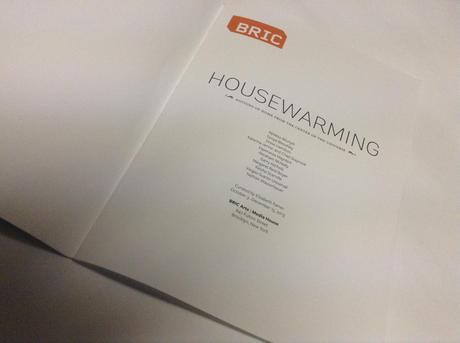
You may not know this about me but the concept of home, of seeing a person’s home, of how a person relates to their specific surroundings, especially their emotional attachments and what they’ve picked up from the places they grew up in is a very important topic for me. It’s a theme I’m working on in a personal project right now, and one I’ve worked on the past in a series yet to be complete.
So, when I saw both the title: Housewarming: Notions of Home from the Center of the Universe and the promotional image BRIC used to present its newest exhibition, I was intrigued and felt I’d be visiting the work of artist who seriously explored what home meant to them.
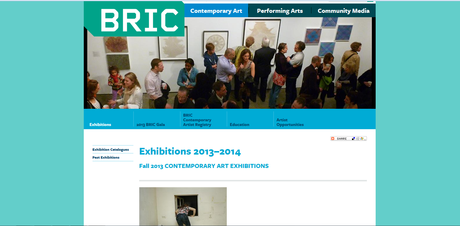
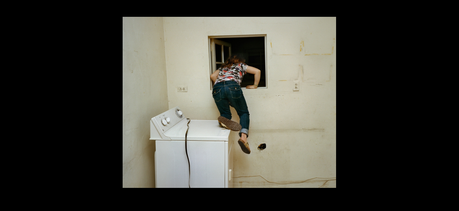
BRIC House is located very close to the Q,R,B train and it can’t be missed due to its very flashy exterior. It’s a very clean, all white looking space which I plan to keep visiting. The highlighted exhibition is very close to the entrance and encompasses a very large space that is downstairs. But, it will feel sparse, not all of the installations and pieces are there, only about 6 or so. But some are on the walls throughout BRIC and others have their own rooms like Katarina Jerinic & Chad Stayrook’s installation: Street Signs Became Flags That Mark Mountaintops which shows how they and their team traveled and photographed each “Summit” they found in New York. It reminded me of all the “Main Streets” we have in America.

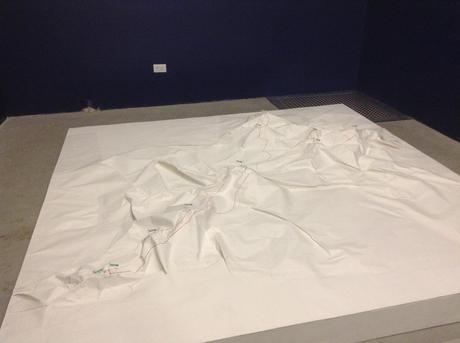
But, they don’t stop at photographs. As you can see they’ve created a mountainous sculpture with each pin of the Summits they’ve found, but there is also a model replica of a picket fence and mailbox, and “scientific samplings” of water or minerals found at some Summits.
But, I didn’t see this installation until thoroughly looking at the works down below. And that is where some of my favorites are.
As a whole, what I enjoyed about the exhibition was that the home being presented wasn’t that of flashy fancy homes that I wouldn’t be able to relate to or those who were pretty privileged. I could find myself in the works that I saw even if not specific to my own experiences. I knew those streets, or that level of disarray and dirty buildings even if from a different country and culture. I’ve seen that quality of life.
Even though I still don’t feel like I fully comprehend what Esperanza Mayobre‘s work was striving to tell me, I was drawn to staring at it for a long period of time.
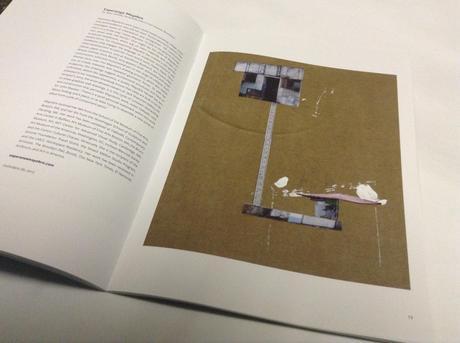
In person it’s a very modest set of small cardboard pieces that have a sparse collage of poverty stricken buildings. There are splatters of what’s maybe white gesso that accentuates it for me acting maybe as glue or another piece of design. The buildings appear to be outside the U.S. since I don’t think we really make architecture like that but the familiarity of their structure and what they house (such as what one structure appears to be selling which I think is culture specific rather than something mainstream) is what I understand. Being a part of a culture that is separate from the U.S. is what I understand since I’m of Haitian descent.
I think why I’m confused as to what I’m to get out of the piece is because the structures are not on the same ground as each other. One cutout is on the top, the other on the bottom. They are connected, sometimes with just the possibly white gesso, or other cutouts but I don’t know what it means. I can only speak from my identification with the buildings and the design of the work.
I sort of felt that confusion in two of Keisha Scarville‘s photo series but overall I thoroughly enjoyed it and I’m typically not a big fan of photography.
Scarville’s series is entitled “i am here” and looking at the whole of it and using the title as reference, to me the series was about this woman documenting her life in her home she newly moved into. The image with the finger in the salt reminded me of the superstition that throwing salt over your shoulder brought good luck and this person was trying to do the same to bring goodness into her home. I could relate to that one especially, as growing up whenever we moved, my mother performed certain rituals in the home to ensure our safety and protection in this foreign home. Another image of the porcelain horse I thought is what’s in her home, another of a woman’s shoulder and clavicle representing her age now, what she looks like in this home. But, two separate photographs that showed a wallet sized photo of a man burned in one and not in the other I couldn’t understand. Why burn it? What did it mean? Had the man died? Did this mean doing away with the past? Who was the man to the person who’s life was being documented? Was this a ritual?
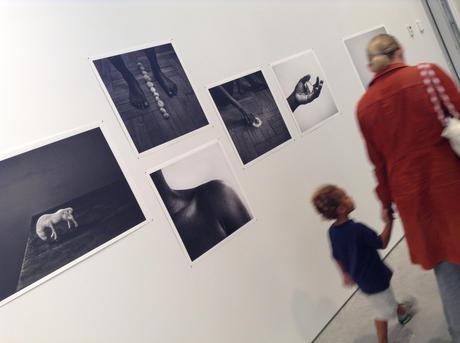
What did it mean?
Just as Mayobre appeared to be highlighting culture, so did Njideka Akunyili‘s large mixed media painting.
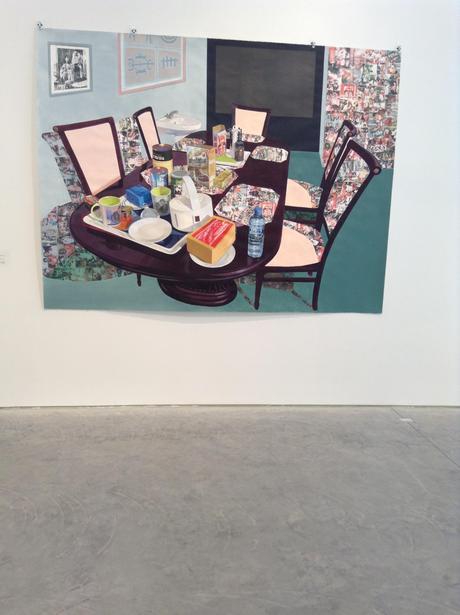
It is a wonderful collage of paint, cutouts, colored pencil and so much more to present what is a part of her Nigerian culture. Her painting skills, her imaginative way of creating shadow by using photos instead of a streak of paint, her ability to mix collage and paint in a way where you aren’t sure what’s paint and what’s a printout is incredible and inspiring. Her dining room table I’m assuming doesn’t show what’s specifically on it during family gatherings but it’s showing what makes up what they eat and what they’re familiar with. That pictures of these very specific people adorn the walls, the chairs, the table and shadow, really show how large their presence is in possibly her life and of course her home. It is intensely narrative and engrossing.
And then there was Nathan Wasserbauer‘s piece titled “Corpus Pianeta/Planeta Corpo” that felt more abstract then narrative but was a wonderfully crafted and designed piece anyway. It’s arguably the biggest of the pieces at the exhibition.
I thought it was cutting the Earth showing that is home and the other portion not shown was not. Yet, it felt inclusive while separating itself as if it (it being the point of view of the person creating this work not necessarily the artist) identified itself within this big half of the Earth and that was pretty harmonious. Go see it in person. There’s no way these pictures could do it justice.
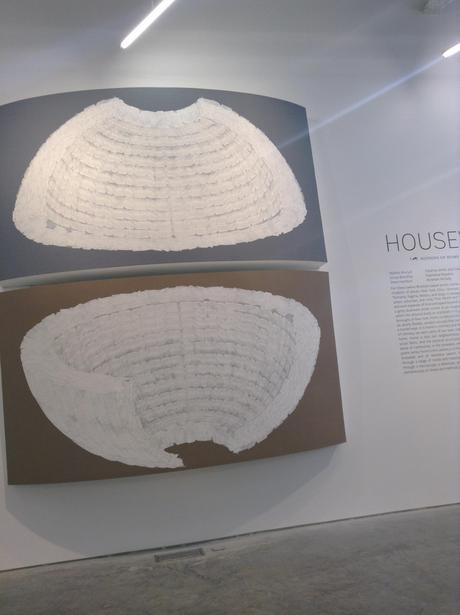
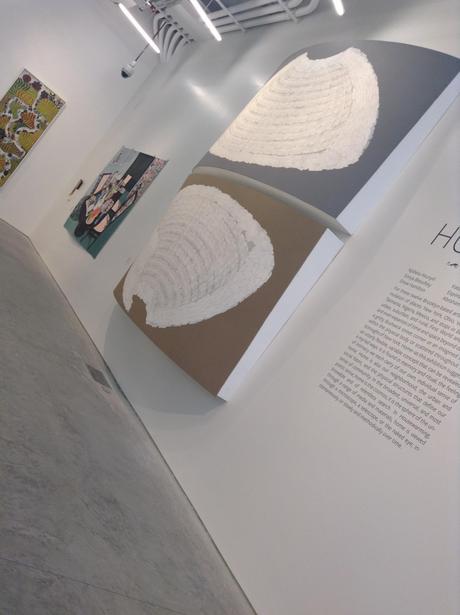
Lastly, the highlight of the exhibition as everyone was drawn to it going down to even small children running toward it was the piece titled “Street-Corner Project” by Drew Hamilton. It’s honestly impressive, and just the level of work put into it, I imagined it had to take up the better part of Hamilton’s year to create, but I don’t know.
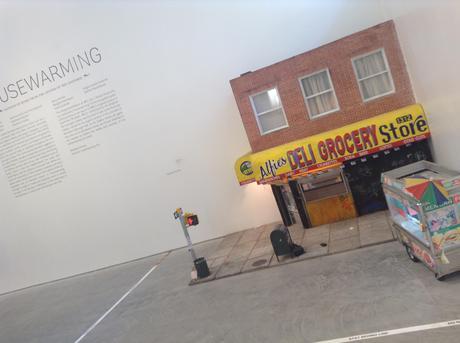
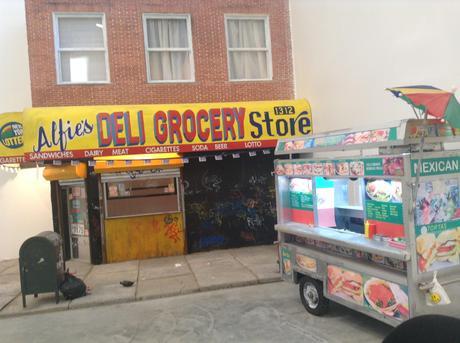
It’s a scene, living in New York, especially in neighborhoods that aren’t the Upper West Side that you’ve seen before if you live here. They make up poor neighborhoods, black neighborhoods especially. I’ve seen them throughout my life. The deli that sells everything, where you’ll find cheap ass food, drinks and candy for pocket change, the apartment above said deli, the graffiti, the halal food truck that litters our streets where you’ll get a meal for about $5. And the street, oh how he even paid attention to our sidewalk and what layers it. Cigarette butts, old gum long blackened. Hamilton put in a lot of work. He has even added in lights for both the walking signs, deli and the apartment below and it is all so New York.
Is this his home? He must on some level identify with it, must’ve walked through it frequently, and it’s become a part of him in some way. I think the chosen scene is very real, very real. Because it shows something I don’t believe we typically show, the true grittiness of our realities without any pretense or belief that we have to show the more presentable parts of ourselves. These corner streets are in many neighborhoods in New York, and they aren’t really paid attention to in the mainstream. Unless you count films about “urban” Black people, or gritty cop shows or films. It is home and I think it is the most direct representation of what BRIC’s exhibition is about.
///
If I lived in Brooklyn I would definitely apply to showcase with BRIC as that is the requirement. It’s wonderful space whose vibe was definitely of artistic freedom and identity, and I saw my work fitting in with some that exhibited.
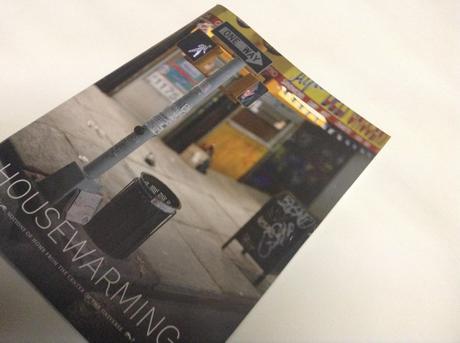
Happy Sunday.

